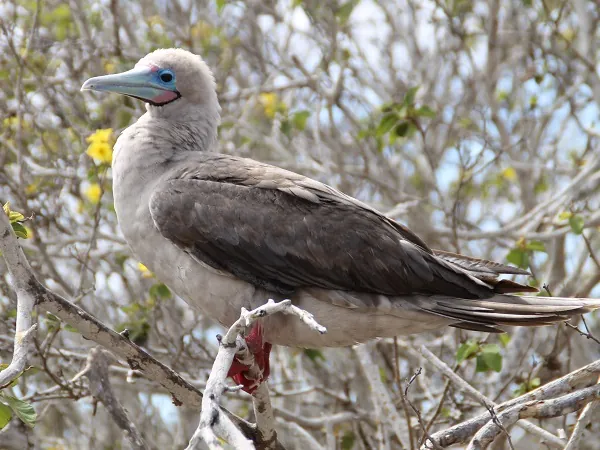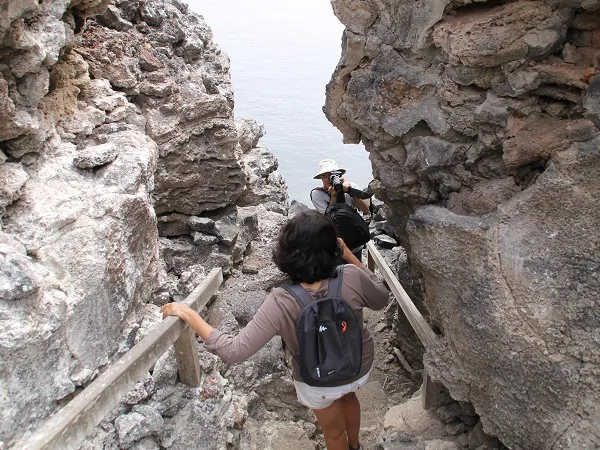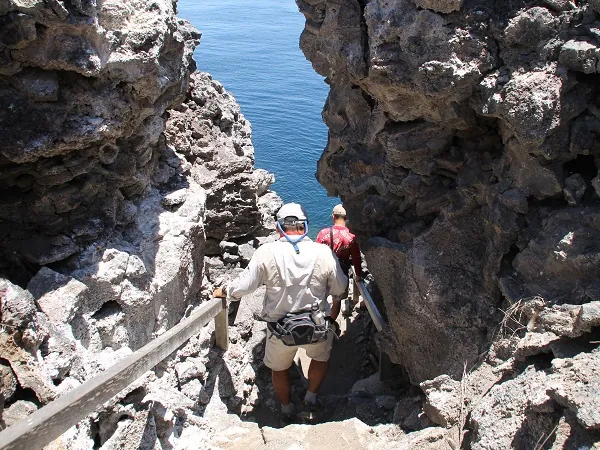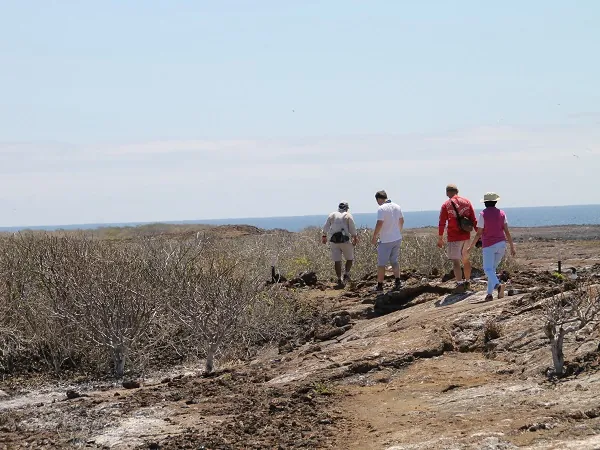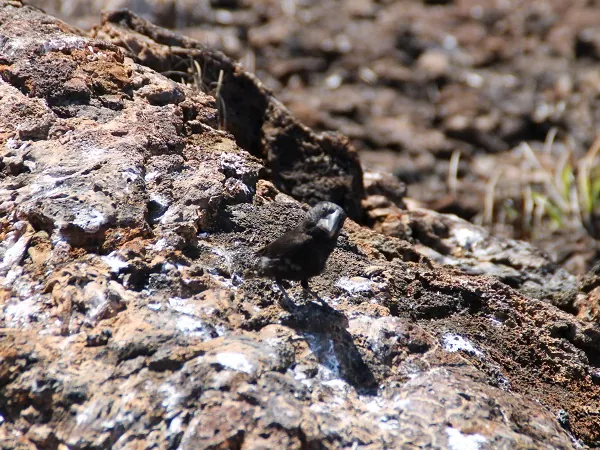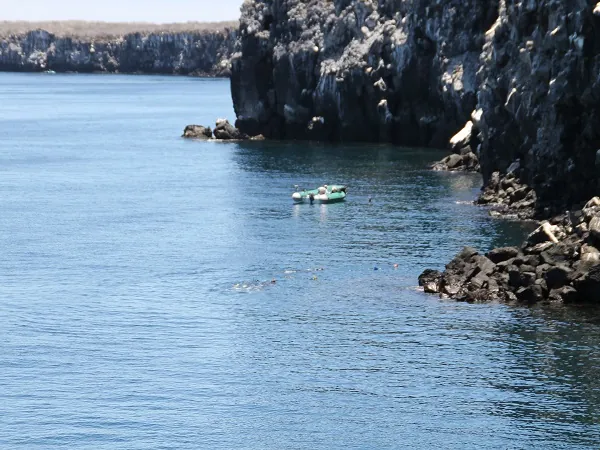Genovesa Island Wildlife Treasure on Galapagos
Area:
14 km²
Highest point:
64 m
Population:
uninhabited
Travel options:
Cruise ship
Visitor highlights:
Important animals and plants:
Sea lions, fur seals, sea lizards, red-billed tropicbirds, frigate birds, gannets, red rock crabs, mockingbirds, finches, storm petrels and many more.

General Information
The small island of Genovesa is located in the outer northeast of the Galapagos Archipelago, approximately 115 km away from the other islands and north of the equator. Its horseshoe-shaped form was created by the eruption of a shield volcano, where one side of the caldera collapsed. The flooding of the crater formed Darwin Bay, which is bordered by steep cliffs. Various coastal birds inhabit this area, while there is also a saltwater lagoon in the island’s interior.
At the two visitor sites, Darwin Bay and Prince Philip’s Steps, a comparatively large number of bird species can be observed. The island is also known as Bird Island. In addition to frigatebirds, Nazca boobies, swallow-tailed gulls, tropicbirds, finches, and mockingbirds, there is a large population of red-footed boobies on Genovesa, estimated at around 200,000 individuals. The only reptiles on Genovesa are marine iguanas, which are the smallest here compared to their relatives on other islands.
Due to its remote location from the other islands – an eight-hour crossing – Genovesa is not visited by many cruise ships. However, you can visit it with vessels such as the sailing yacht Samba, the yachts Ocean Spray, Angelito, Estrella del Mar, Galaxy, Archipel I, or Solaris.
Places to visit on Genovesa Island
Darwin Bay
Visitor boats dock at the small sandy and coral beach of the bay. From there, you can take a short path of about 750 meters up the hill to a viewpoint overlooking the cliffs. Initially, the path runs along a tidal lagoon where you can observe swallow-tailed gulls, lava gulls, and yellow-crowned night herons, among others. Visitors walk among Palo Santo trees, Opuntia cacti, and saltbushes, where frigatebirds and red-footed boobies perch. It’s important to watch the path carefully to avoid stepping on bird eggs.
In the bay itself, you can observe the birdlife on the cliffs from the panga. Sea lions and fur seals, marine iguanas, and red rock crabs can also be spotted among and on the rocks. Although the water is somewhat murky due to its high nutrient content, snorkeling is still worthwhile. You can observe many fish here, including young hammerhead sharks and manta rays, as well as sea turtles and sea lions.
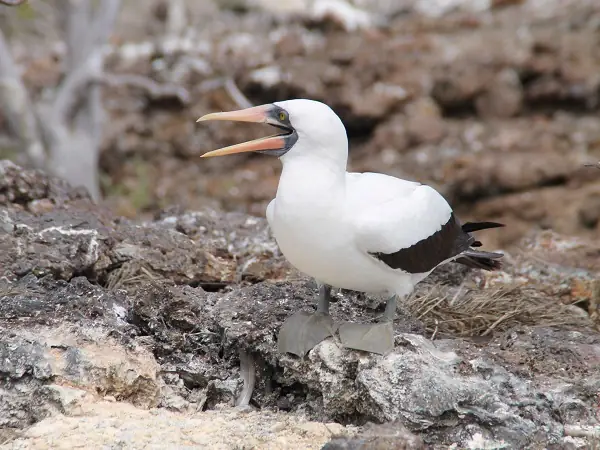
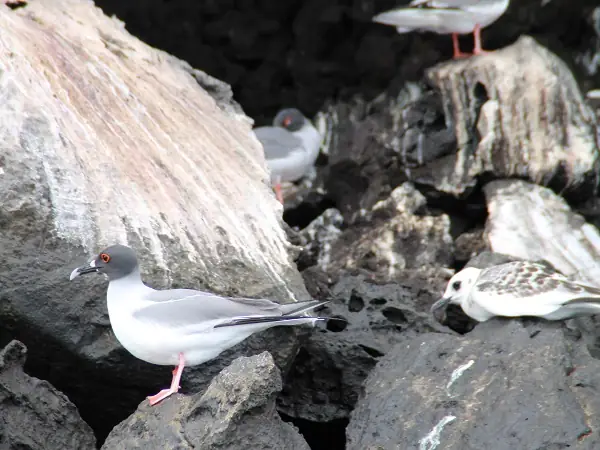
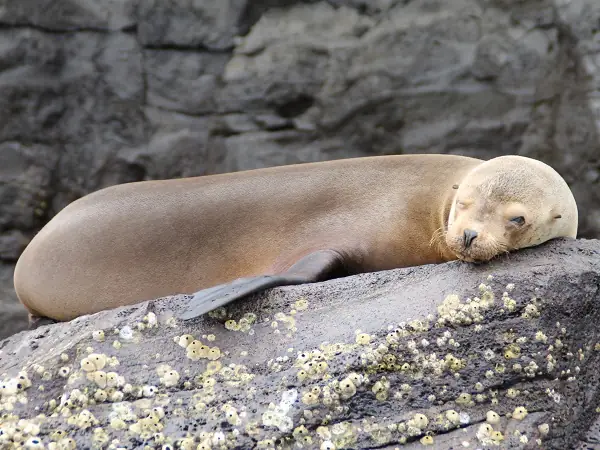
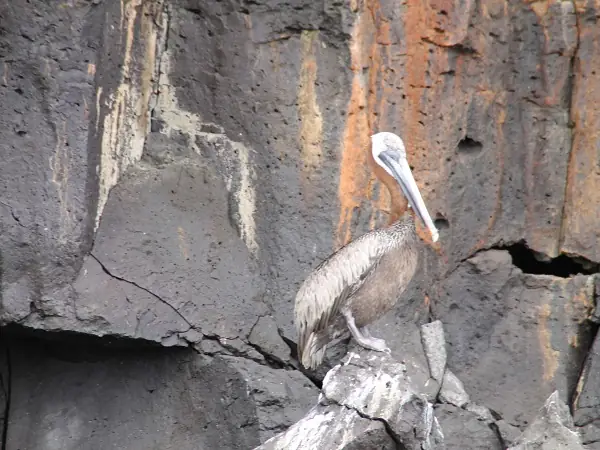
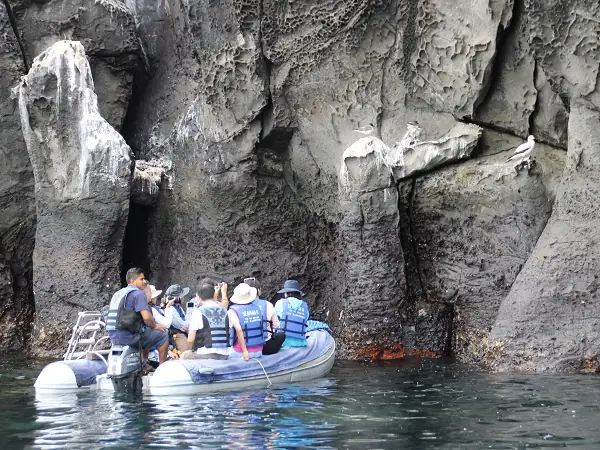
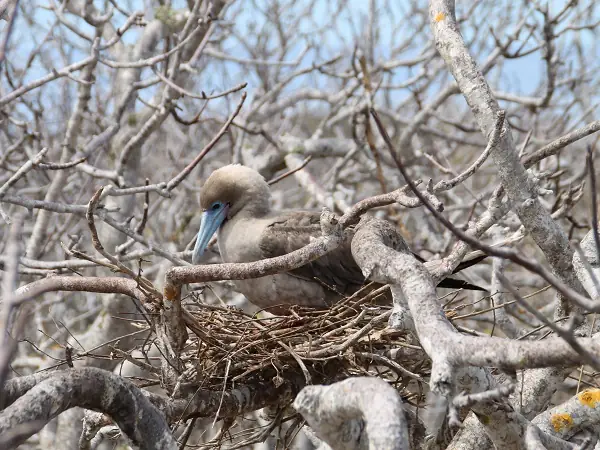
Prince Philip´s Steps
During the panga ride along the coast, you can observe various bird species nesting in the cliffs and even a small colony of fur seals. You disembark at the base of a steep staircase leading up to a plateau. Once at the top, you can enjoy a magnificent view. In the sky, you will surely see various birds circling. The path continues into the interior of the island, passing nesting boobies and through Palo Santo forests. Near the cliffs, you can observe storm petrels, which hunt here during the day instead of at night like their relatives on other islands. With some luck, you might even spot a barn owl.

